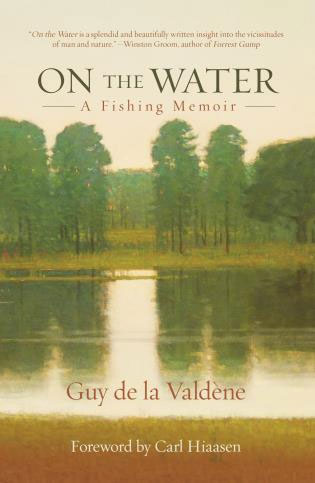“To Cast a Fly”

Buy “On the Water: A Fishing Memoir” from the MidCurrent Store
Half a millennium ago someone had the idea to attach a measure of line to the end of a long cane pole and use its reach to entice trout and salmon with crickets, flies, and grasshoppers. Rudimentary wooden reels with extra line encouraged the ensuing generation of anglers to cast the fly beyond the tip of the rod. Today the intention is the same, but the tackle has evolved into light, strong, flexible carbon poles and reels with drags that allow the backing to whisper after the fish smoothly, effortlessly. In this century a ninety-foot cast, mostly useless for fishing, is the modern measure of a man’s fly-casting manhood.
The more accomplished casters understand that haste is not a fundamental component of fly fishing. Staged within a rhythm dictated by history and circumstances, the artificial flight of a fly is meant to embody accuracy and temptation. A slow cancellation of gravity, a cadenced motion that matches the stroke of a scythe cutting wheat, the cast originates from an old and beautiful tradition of men and women eager to entice a fish using the feathers of a bird. The motion of the fly rod is designed to stir life into the feathers, positioning them in a horizontal runway in space where the fly takes flight and is sustained like a guitar note—once, twice, three times-as it gathers speed and direction until, finally released, it sails to a place where fish swim.
I understood the mechanics of fly casting early, and within days I felt the weight of the line tugging at the tip of the rod and could effectually make a cast. But when it came to accuracy, particularly in windy conditions or while trying to present the fly at a target that moved of its own free will, months passed before I displayed any measure of control. i spent hours practicing on the beaches and golf courses of southern Florida and stripped innumerable fly lines across the blacktop on the street behind my house. I built wigs of monofilament, drove hookless flies into my face, and a few times, vexed beyond restraint, smacked fiberglass rods across the trunks of palm trees, the roofs of cars, and on cement walkways, each time triggering a pleasing shattering of fiberglass. I had a temper.
Gil taught me early on how to speed up the development of the fly line by double hauling on the backcast and again as the fly was moving forward. For a while, knowing when to pull and when to ease the tension on the line was like trying to rub my stomach while patting my head, but eventually the motion became natural. The subtleties required to master the particulars of catching fish, however, would take longer.
Time spent on the water gradually taught me the nuances that shape a good fly fisherman. I learned that an uninspired backcast guaranteed an equally weak delivery. Creeping the butt of the rod forward before releasing the fly line dampens the power stroke, as does collapsing the wrist inward at the end of the cast. A following wind begs for a low backcast and high finish; the opposite holds true in a headwind. A right-hand wind that steers the fly at one’s head is overcome by learning to cast and duck or, more elegantly, taking the backcast over the left shoulder. Roll casts are used to avoid vegetation menacing the flight of the fly, and when confronted with shoreline growth, one learns the sidearm cast, parallel and close to the water.
It took ten years before I was comfortable with the arcane understanding of angles, wind, the vagaries of fish, and in the case of flats fishing—which is what I loved most—the all-important speed and direction of the skiff I was fishing from. Back then, I could not understand why the techniques of fly casting were so elusive, but I now realize that it takes a decade to do most things well.
When the variables finally came together I no longer thought about the mechanics of the cast. The fly line developed and stretched behind me because I expected it to, allowing me to focus on the whimsical nature of the target. The casts were mellifluous and silky on calm days, determined on windy days. I no longer felt a discord between my hands and my desires; the rod simply ceased to exist.
Excerpted from On the Water: A Fishing Memoir by Guy de la Valdène (Lyons Press, February 2015)











